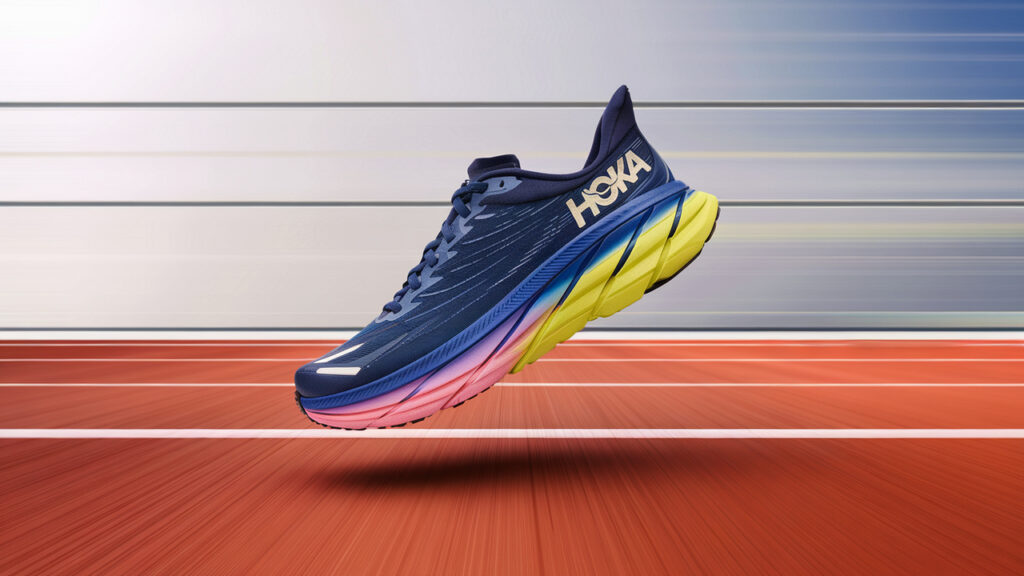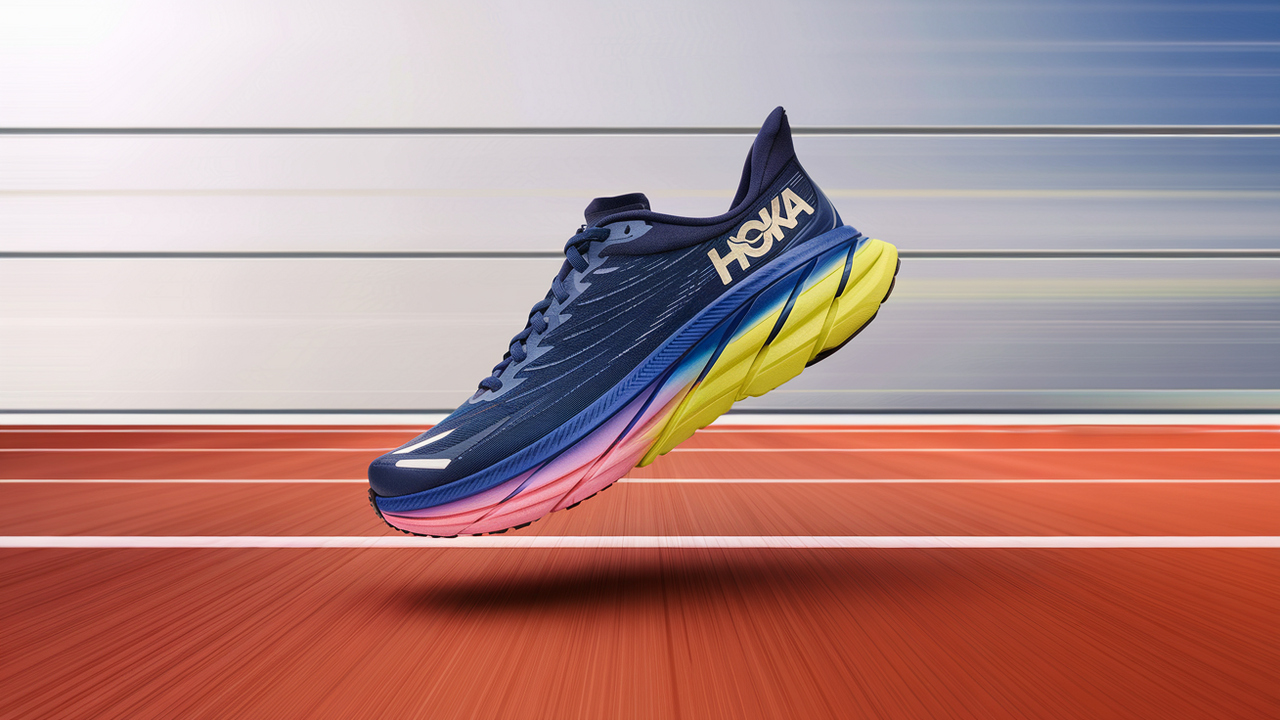Hoka Shoe Models Explained: What’s the Difference Between Each One?
If you’ve ever tried to shop for Hoka shoes and felt overwhelmed by all the names — Bondi, Clifton, Arahi, Gaviota, Speedgoat — you’re not alone. Each Hoka shoe model is built for a specific purpose, and while they share core features like cushioning and rocker soles, they’re not one-size-fits-all.
In this guide, I’ll break down the most popular Hoka models, what makes each one unique, and which is best based on your needs — whether you’re walking, running, working, or recovering.

Table of Contents
What All Hoka Shoes Have in Common
Before diving into each model, here’s what you can expect from almost any Hoka shoe:
- Maximal cushioning for shock absorption and joint relief
- Meta-Rocker sole that helps with smooth heel-to-toe transitions
- Lightweight materials despite bulky-looking soles
- Supportive heel counters and foot-cradling midsoles
- Options for wide widths and orthotic compatibility
Now, let’s explore the differences.
Hoka Clifton – Lightweight Everyday Neutral Trainer
The Hoka Clifton series (now in its 9th version) is a neutral, lightweight daily trainer that balances soft cushion with a responsive feel. It’s ideal for running, walking, and all-day wear.
Best for:
- Daily walking or jogging
- People who want soft, all-purpose comfort
- Beginners and casual fitness users
Popular model: Hoka Clifton 9 on Amazon
Hoka Bondi – Maximum Cushion for Comfort Seekers
The Bondi is Hoka’s plushest road shoe, built for people who want maximum shock absorption. It’s a favorite among nurses, teachers, and long-distance walkers who spend all day on their feet.
Best for:
- Long shifts or standing 8–12 hours
- Joint pain relief or recovery days
- Walkers needing extreme softness
Popular model: Hoka Bondi 8 on Amazon
Hoka Arahi – Stability for Overpronation
The Arahi is a lightweight stability shoe, designed to correct overpronation using Hoka’s J-Frame™ technology. It feels like a neutral shoe but gently guides your foot into better alignment.
Best for:
- Mild to moderate overpronation
- Flat feet or ankle instability
- Daily wear for people needing balance
Popular model: Hoka Arahi 6 on Amazon
Hoka Gaviota – Maximum Stability and Support
The Gaviota is Hoka’s most supportive stability shoe. It has a firmer feel than the Bondi or Clifton but is ideal for people who need structure and arch control. It features H-Frame™ support and a wide base for stability.
Best for:
- Severe overpronation
- Heavy walkers or runners
- People needing strong arch support
Popular model: Hoka Gaviota 5 on Amazon
Hoka Speedgoat – Rugged Trail Running Beast
The Speedgoat is designed for technical trail running and hiking. It features Vibram® Megagrip outsoles and multi-directional lugs for excellent traction on rocky, muddy, or uneven terrain.
Best for:
- Trail running and hiking
- Mountain or off-road terrain
- Runners who need durability + grip
Popular model: Hoka Speedgoat 5 on Amazon
Hoka Challenger – Road-to-Trail Versatility
The Challenger ATR is a hybrid that handles pavement and light trails equally well. It’s lighter and more flexible than the Speedgoat, making it great for casual hikers, dog walkers, and runners who transition between surfaces.
Best for:
- Mixed terrain (gravel, dirt, roads)
- Runners who like flexibility
- Everyday walking or fitness
Popular model: Hoka Challenger ATR 7 on Amazon
Hoka Transport – Stylish for City Life and Walking
The Transport is a lifestyle-performance hybrid with a clean look and city-ready features. It’s comfortable enough for long walks but stylish enough for everyday wear. Think of it as your go-to commuter shoe.
Best for:
- Walking to work or school
- Casual city use
- Travel and everyday comfort
Popular model: Hoka Transport on Amazon
Hoka Mach – Lightweight, Fast, and Responsive
The Mach series is for runners who want a faster, more responsive shoe with less bulk. It doesn’t have the same max cushioning as the Bondi, but it’s perfect for tempo runs, speed training, or runners who want a “faster feel.”
Best for:
- Lightweight training
- Tempo runs and interval workouts
- Neutral runners looking for bounce
Popular model: Hoka Mach 5 on Amazon
Which Hoka Should You Choose? A Quick Summary
| Model | Type | Best For |
|---|---|---|
| Clifton 9 | Neutral | Everyday wear and light running |
| Bondi 8 | Max Cushion | Comfort, standing, recovery |
| Arahi 6 | Stability Light | Mild overpronation |
| Gaviota 5 | Max Stability | Flat feet, joint support |
| Speedgoat 5 | Trail | Technical off-road terrain |
| Challenger 7 | Road-to-Trail | Mixed terrain, daily wear |
| Transport | Lifestyle | Walking, commuting, city life |
| Mach 5 | Performance | Speed work, light daily training |
One Brand, Many Solutions
Whether you walk, run, hike, or just need all-day comfort, there’s a Hoka shoe built for your lifestyle. From the ultra-soft Bondi 8 to the trail-tackling Speedgoat 5, each model serves a specific purpose. Once you understand the differences, finding the perfect pair becomes easy — and your feet will thank you every step of the way.
Want help choosing based on arch type, foot pain, or daily routine? I can add a comparison chart or custom quiz for your blog visitors — just say the word!
Which Hoka Is Best for Standing All Day?
If you’re on your feet for 8+ hours — whether in healthcare, retail, or education — you need a shoe that provides maximum cushioning and support without collapsing under pressure. The Hoka Bondi 8 remains the top choice for standing all day, thanks to its thick midsole and soft but stable design. For added structure, especially if you’re prone to overpronation or foot fatigue, the Gaviota 5 is another great pick.
Are Hoka Shoes Good for Flat Feet?
Yes — particularly the Arahi 6 and Gaviota 5 models. Both offer medial support features that guide your stride and prevent arch collapse, which is crucial for people with flat feet or overpronation issues. These shoes help reduce knee, hip, and back strain while also encouraging better foot alignment over time. For flat-footed runners or walkers, a stability Hoka model is a smart investment.
Which Hoka Shoes Are Best for Wide Feet?
Several Hoka shoes come in wide-width options, making them perfect for users with broader feet, bunions, or swelling. The Bondi 8, Clifton 9, Arahi 6, and Gaviota 5 are all available in wide sizes. These models have roomy toe boxes, which reduce friction and allow for more natural foot movement throughout the day.
Best Hoka for Runners Transitioning from Other Brands
If you’re switching from Brooks, Nike, or Asics to Hoka, the Clifton 9 is the best entry point. It offers a neutral ride with enough softness to ease the transition without feeling unstable or overly bulky. Runners who used motion-control shoes in other brands will feel at home in the Arahi 6 or Gaviota 5, as both offer structured support with Hoka’s signature cushion.
Are Hoka Shoes Good for Plantar Fasciitis?
Yes — Hoka shoes are frequently recommended for people with plantar fasciitis due to their shock-absorbing midsoles and supportive heel cups. The Bondi 8 is especially effective for easing heel pain, while the Arahi 6 or Gaviota 5 may help if your plantar fasciitis is related to arch collapse or improper gait alignment.
Which Hokas Work Best for Travel and Walking Cities?
For all-day walking in urban environments, airports, or while traveling, the Hoka Transport and Clifton 9 are excellent choices. They’re lightweight, breathable, and supportive enough for long distances without feeling too bulky. The Transport also features a quick-toggle lace system and a more street-style look, perfect for blending in with casual outfits.
How to Choose Your First Pair of Hokas
If you’re unsure where to start, ask yourself what you’ll use the shoes for most: daily walks, long shifts, trail hikes, or running? Start with a neutral shoe like the Clifton 9 for daily versatility, or go with the Bondi 8 if comfort is your top priority. Need support or experience foot fatigue? Begin with the Arahi 6 or Gaviota 5 to see how stability makes a difference.

